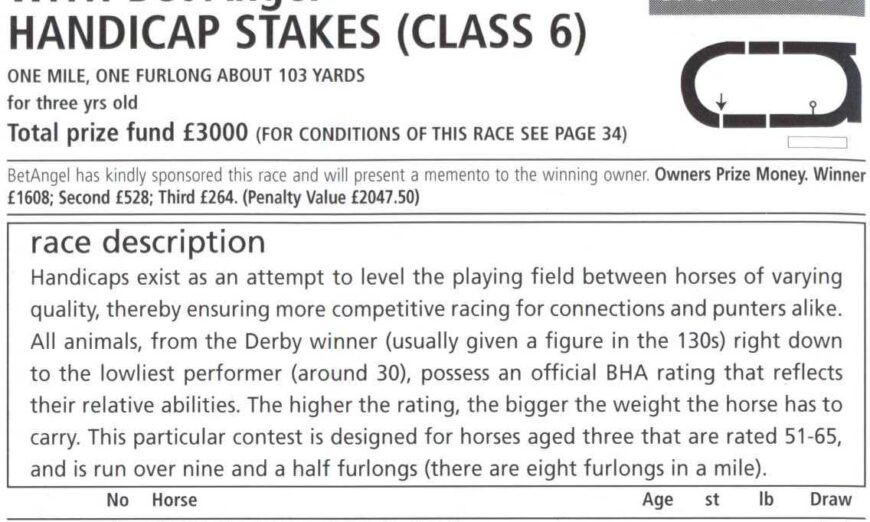How I trade Horse racing markets
One of the great things about the way that I participate in the market is that I ‘read’ what information is being discounted by the market.
This can be paraphrased as ‘reading order flow’. I’m looking at the ladder interface, the charts and other data to understand which horses are favoured and which are not. It’s an incredibly effective way to trade as you can ‘just’ turn up at a market and trade it without too much research.
What I’m trying to do is understand what the market is doing and therefore what its participants are thinking. This allows me to get in ahead of the price action but understand where the price is likely to go.
This isn’t a precise method however, I only win about seven or eight races that I trade. In those races that I get wrong, I try and limit my losses. If you want a quick summary of how I trade there you have it!
As long as I do lots of markets and get things roughly right, I can be pretty sure I’ll make money over the course of a week.
Why do I look at racing cards?
You will often see me commenting on the quality of the racing or on busy days how likely it is to clash. But why do I care about the racing card if I’m not particularly interested in form and I’m just anticipating the market?
Quality of racing
The quality of racing determines how ‘decisive’ I expect the market to be. If we have high-quality racing then the market ‘tends’ to be more certain about its opinion on a horse and how its prospects are changing.
From a trading perspective, I’m more likely to stick with a developing trend on higher-quality racing, whereas a lower quality race I’m more likely to close my position once it’s reached a position that looks fully valued, in either direction.
Race type
If you have a competitive handicap race where all the runners are fairly evenly priced, the market is telling you the handicapper has the market well measured and that there isn’t much indecision about the general uncertainty of the winner.
Markets like this don’t tend to stray far outside their typical trading range. If they do, one runner or another becomes value on either side and a corrective sets in. Therefore these markets tend to cycle in a narrow range.
If you have a maiden with unraced horses, nobody knows what the price should be as there is no form and the market will go on opinion and emotion. The price could literally end up anywhere. You could get some nice moves in these markets and should trade them to their full ability. If you get it wrong, bail your position quickly.
Number of races
I hate days when lots of races clash. There are several reasons, but the first one is because the markets don’t work up a nice ‘flow’. Money tends to arrive late and can be ‘violent’ as people rush to get their money on the next race. These markets can be incredibly hard to read reliably.
You also tend not to get a good view of the paddock and can’t see the horses parading. So you often don’t get to see if there are any horses playing up that could affect your trade.
You also have this problem that if the main money in the market is arriving very late and just before post time. This means there isn’t much time to get a decent move in the market so your trading opportunity is limited.
I need to trade at moments in the market where liquidity is high as this is much safer to trade. You can put in trades early but if they go against you, you may never be able to exit at a decent price. It’s better to trade during high liquidity periods or not at all in my opinion.
Summary
Trading order flow is a great way to profit from horse racing markets as it allows you to profit without any knowledge of the underlying sport, in this case, Horse racing.
But having a little knowledge of the differences between markets, will help you trade much better and avoid markets where you are less likely to profit, for a number of reasons.

